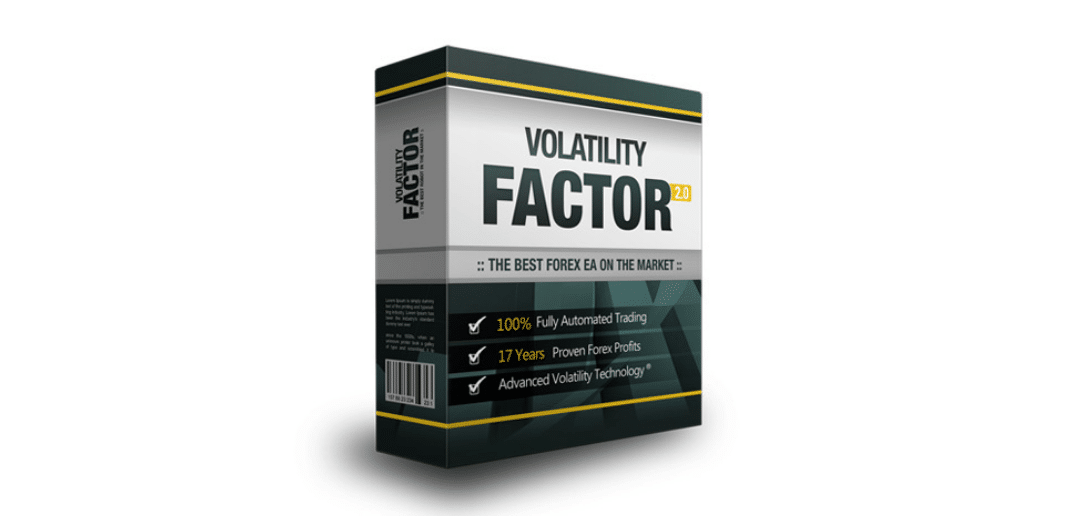Being a lucrative market, traders are increasingly searching for trading tools that can help them capitalize on Forex. Does Volatility Factor 2.0 have the potential to satisfy this need? According to the vendor, this EA can turn volatility-based trading into a consistently profitable strategy. We have learned that this allegation does not hold water. Read along to discover more.
This product is being marketed by the FXautomater Company. This vendor is famous for releasing a variety of Forex robots. However, despite claiming to have been in the market for over a decade, it is strange that this vendor has not found it necessary to unveil the faces and profiles of its team.
You can get Volatility Factor 2.0 at a one-off price of $227. This pack includes 1 real account, a 60-day money-back guarantee, and many other features.
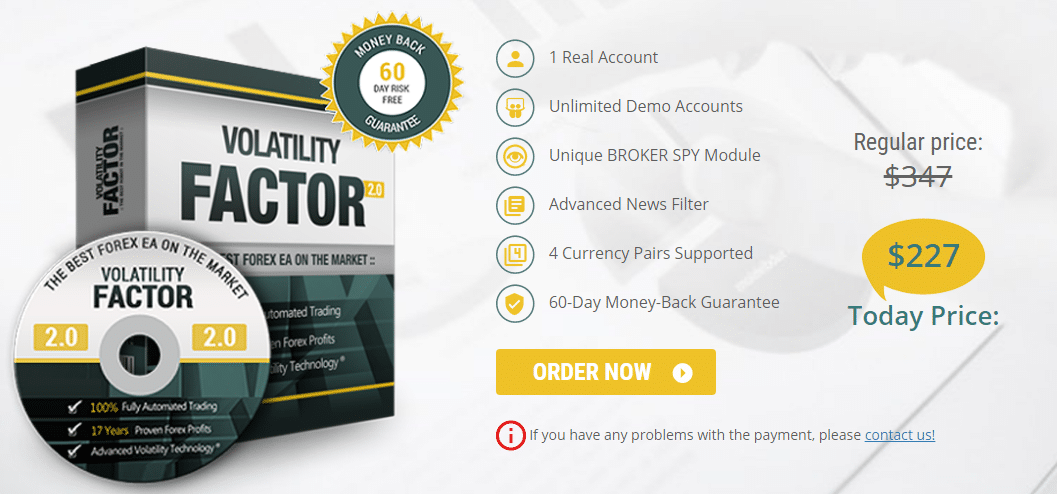
Key features
- Unique broker spy module.
- Advanced time management system.
- Improved profit protection system.
- High-impact news filter.
- Intelligent built-in protection system.
- Operates with any NFA-regulated brokers.
- Trades with GBPUSD, EURUSD, USDCHF and USDJPY currency pairs.
- Works on the 15-minute time frame.
- Minimum deposit is $100-$500, but the recommended capital is $1,000-$5,000.
Volatility Factor 2.0 trading approach
As the vendor puts it, Volatility Factor 2.0 is designed to take advantage of the market volatility movement. When the robot notices a movement in one direction, it mainly signals trades in the direction of the medium-term market impulse. However, the developers fail to mention that the grid strategy is present.
Backtesting results
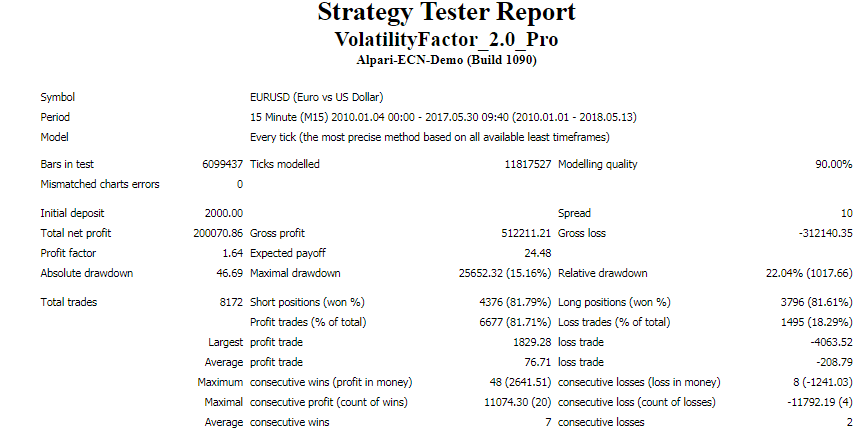
From January 2010 till May 2017 the robot turned an investment of $2,000 to a profit of $200,070.86. This was preceded by a completion of 8172 trades. The success rates for short positions and long positions were 81.79% and 81.61% respectively. The profit factor was 1.64.
The relative drawdown of 22.04% was somewhat large and showed that the robot engaged in risky trading. The average profit trade was $76.71. The average loss trade (-$208.79) which was higher by far, also brought to light the inefficiency of the trading approach.
Volatility Factor 2.0 live trading results
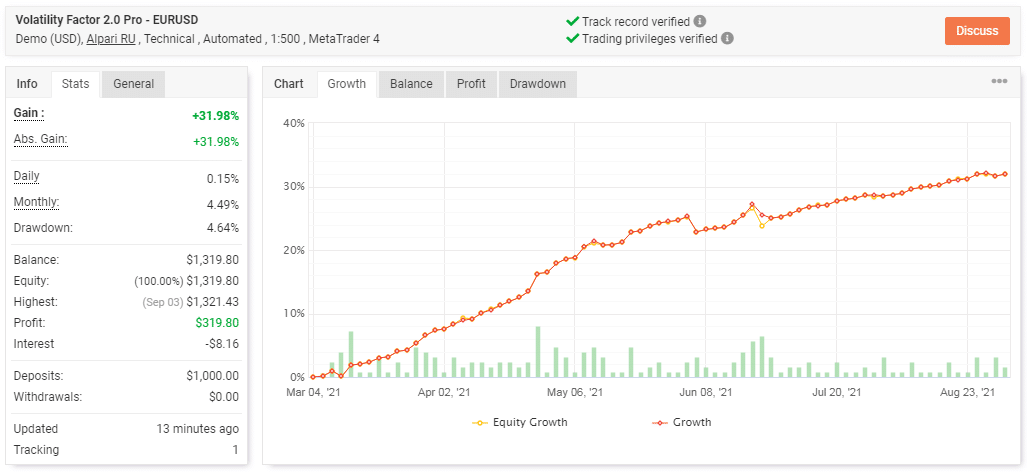
A closer observation of the above stats shows a robot that is performing poorly because it hardly generates profitable results. Since its inception in March 2021, it has only made a profit of $319.80 hence growing the deposit by 31.98%. The balance now stands at $1,319.80. The drawdown (4.64%) is not a threat.

The robot doesn’t trade much. It has only executed 209 trades in about 5 months. The win rates for long positions are 84% and 80% for short ones. The profit factor is 3.38. The EA makes more losses than wins. This is evidenced by the high average loss of -8.64 pips against the average win of 7.19 pips.
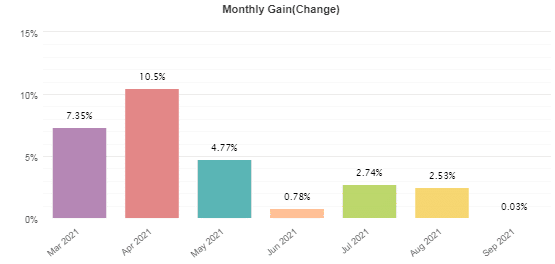
This monthly performance graph indicates that the EA made the highest amounts of profits (10.5%) in April. The other periods recorded small gains that were unable to grow the capital significantly.
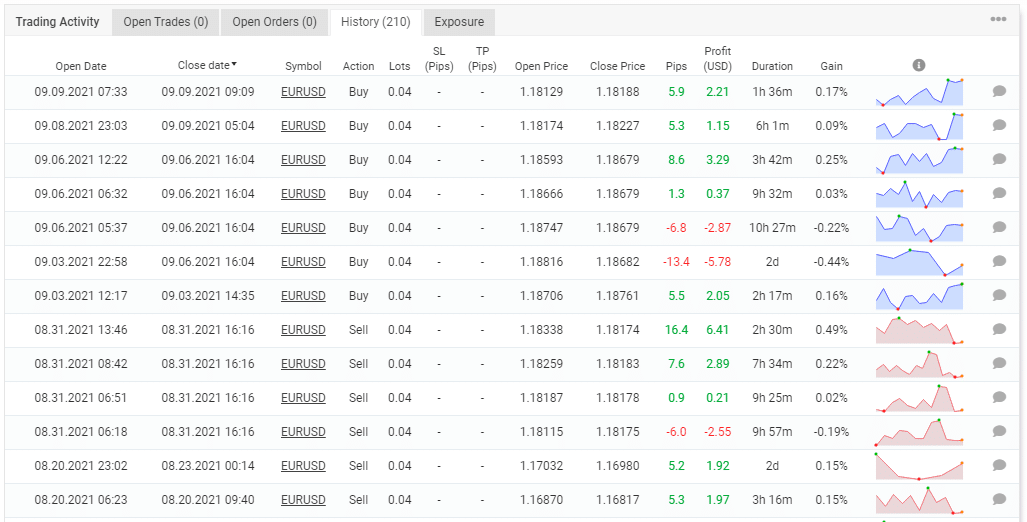
The grid strategy was used in trading. The lot sizes were dynamic. The gain column revealed the robot’s low return rate.

It will take more than a few trades for this account to be wiped out entirely.
What are the risks with Volatility Factor 2.0?
Through our assessment, we have concluded that this EA is not a reliable system. This is because:
- It has a low return rate
- It applies grid strategy.
- The drawdown can increase exponentially (as seen in the backtest report).
Worth noting!
Volatility Factor 2.0 has received only 1 feedback on FPA. However, this review has been labeled spam by the moderation team. Therefore, as far as customer testimonials are concerned, we have nothing to assess. We might as well conclude that users of this robot are non-existent.
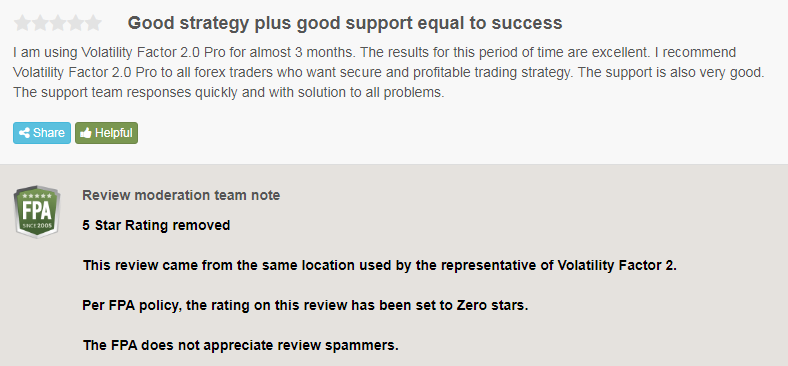
What are the pros & cons of investing in Volatility Factor 2.0?
| Pros | Cons |
| Money-back guarantee is offered | Risky trading strategy |
| Makes small profits | |
| Lack of reliable customer feedback | |
| Lack of vendor transparency |
Investing in this EA is thus imprudent.
Volatility Factor 2.0 Conclusion
We advise you not to waste your money on Volatility Factor 2.0. There is a reason why traders are not interested in it. The risky grid strategy being applied is enough to turn people off. Again, why would anyone invest in a tool that does not give them good returns on investment? It wouldn’t make any sense.
-
Features
-
Pricing
-
Strategy
-
Performance
-
Reliability
